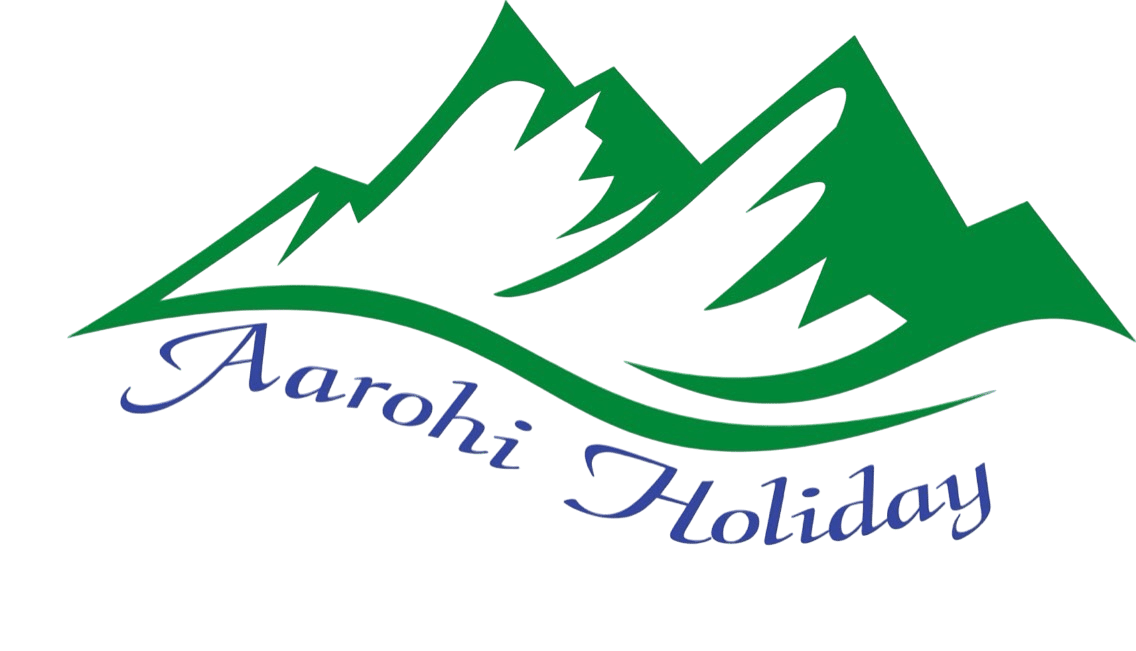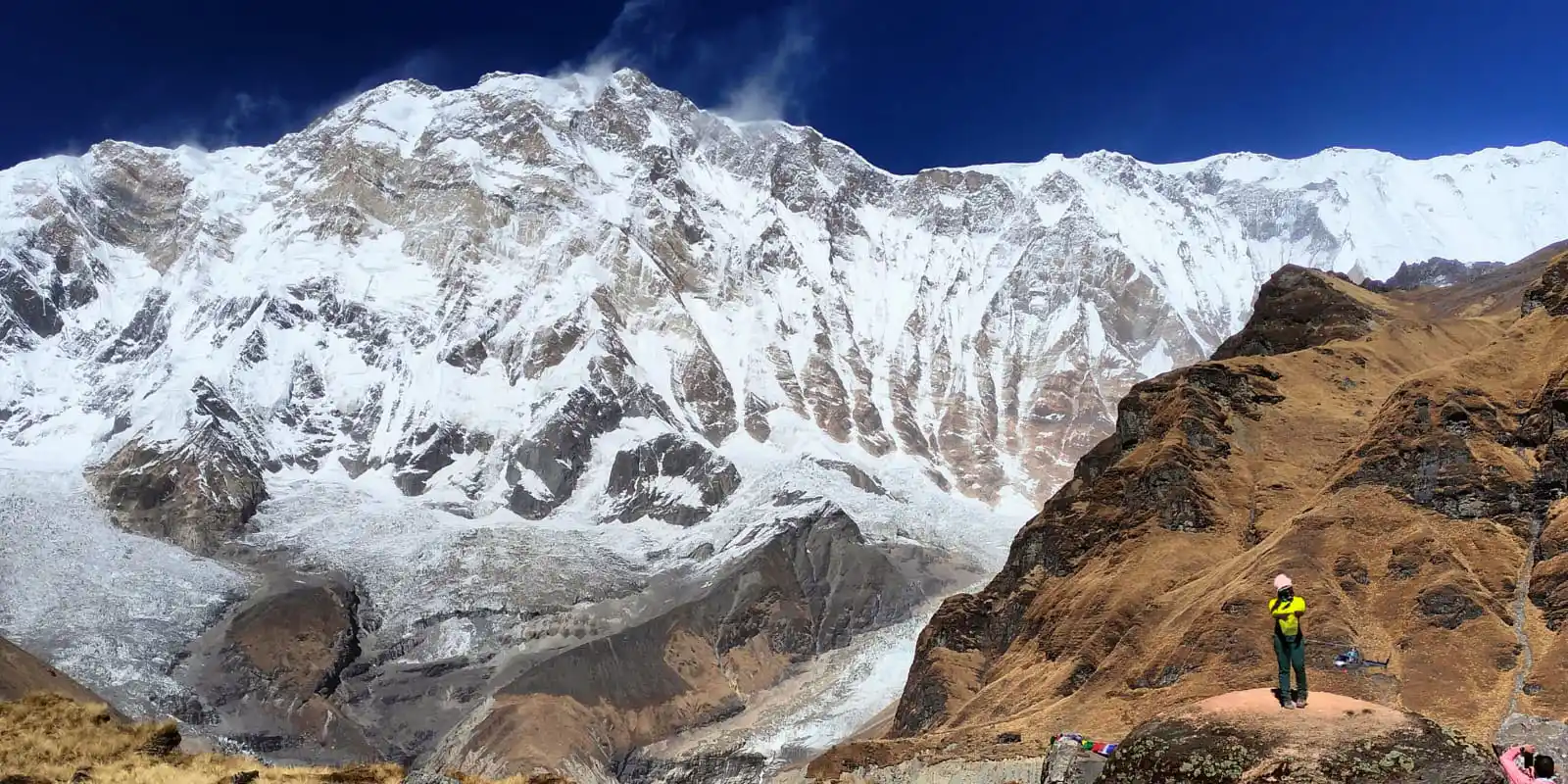Annapurna Circuit with Tilicho Lake Trek Difficulties
The Annapurna Circuit with Tilicho Lake Trek is an adventurous and rewarding journey, but it also comes with added challenges. The route covers diverse terrain and reaches high altitudes, with the Tilicho Lake section (4,949m) adding a demanding side trip before crossing the Thorong La Pass (5,416m). This combination increases the risk of altitude sickness, requiring good physical fitness and proper acclimatization.
Trekkers should be prepared for long walking days (6–8 hours), steep ascents, rocky trails, and occasional exposure to harsh weather, especially at higher elevations where cold, wind, or snow can occur. Some sections are remote, with limited facilities. However, with the right gear, a slow and steady pace, and expert guidance from Aarohi Holiday, the trek is manageable and incredibly fulfilling for those ready to embrace the challenge
Trekking Day for Annapurna Circuit with Tilicho Lake
A typical day on the Annapurna Circuit with Tilicho Lake Trek begins early with a warm breakfast at a teahouse before hitting the trail. You’ll trek for 6 to 8 hours daily, passing through diverse terrain—lush forests, alpine meadows, and rocky ridgelines—while enjoying dramatic Himalayan views. As you approach Tilicho Lake (4,949m), the trail becomes more rugged and remote, adding a sense of adventure and challenge.
The journey includes regular stops for tea and lunch, with ample breaks to rest and acclimatize, especially as you gain altitude toward Thorong La Pass (5,416m). Afternoons often allow time to explore nearby villages or simply relax and soak in the mountain atmosphere. Each day blends physical effort with cultural encounters in traditional Gurung, Thakali, and Tibetan-influenced communities, making this trek a unique and unforgettable Himalayan experience.
Acclimatization during Annapurna Circuit with Tilicho Lake Trek
As the trek ascends above 3,500m, acclimatization becomes essential to prevent altitude sickness. A key acclimatization day is spent in Manang (3,540m), where trekkers take short hikes to higher elevations before returning to sleep at a lower altitude. The side trip to Tilicho Lake (4,919m) further aids acclimatization before rejoining the main trail. The ascent to Thorong La Pass (5,416m) is done gradually, ensuring proper rest, hydration, and a steady pace to adjust to the high altitude safely.
AMS and Safety on the Annapurna Circuit with Tilicho Lake
Safety is a top priority on the Annapurna Circuit with Tilicho Lake Trek, especially with the added altitude challenge of visiting Tilicho Lake (4,949m) and crossing Thorong La Pass (5,416m). Our guides are trained in high-altitude first aid and monitor trekkers closely for signs of Acute Mountain Sickness (AMS).
The itinerary includes a gradual ascent and key acclimatization stops, especially in Manang, to help your body adjust to the altitude. If any AMS symptoms arise, the guide will act promptly—this could mean resting, descending, or arranging emergency evacuation if needed. By maintaining good hydration, walking at a steady pace, and relying on the experienced care of Aarohi Holiday, trekkers can complete the journey safely while enjoying the adventure of the high Himalayas.
Physical Fitness for Annapurna Circuit with Tilicho Lake
The Annapurna Circuit with Tilicho Lake Trek is a physically demanding high-altitude journey that requires good fitness and stamina. Trekkers should be prepared for 5–8 hours of walking each day over steep and rugged terrain, including visits to Tilicho Lake (4,949m) and Thorong La Pass (5,416m).
While prior trekking experience helps, it’s not necessary. Cardio training, leg and core strength exercises, and practice hikes with a backpack are great ways to prepare. With the right training, proper acclimatization, and expert guidance from Aarohi Holiday, most fit individuals can complete the trek safely and enjoyably.
Travel Insurance for Annapurna Circuit with Tilicho Lake
Travel insurance is essential for the Annapurna Circuit with Tilicho Lake Trek, as the route reaches high altitudes and passes through remote Himalayan terrain. Your insurance policy should cover trekking up to 5,500 meters, including emergency helicopter evacuation, medical treatment, trip cancellations, and loss or theft of personal belongings.
Because of the risks of altitude sickness, weather disruptions, and unpredictable conditions, having proper insurance ensures your safety, security, and peace of mind throughout the journey.
Annapurna Circuit with Tilicho Lake cost
The cost for the Annapurna Circuit with Tilicho Lake Trek is USD 1,350 per person, covering all major services from Kathmandu to Kathmandu. This includes transportation, permits, accommodation, meals, and an experienced guide and porter.
Group discounts of 5% to 10% are available, and one group leader gets a free spot. This all-inclusive price offers great value for an extended adventure that includes both the classic circuit and the stunning Tilicho Lake
Important Notes for Annapurna Circuit with Tilicho Lake
- The drive from Kathmandu to Besi Sahar takes around 6-7 hours. You can also hire a private jeep for a more comfortable journey.
- The drive from Kathmandu to Besi Sahar takes around 6-7 hours. You can also hire a private jeep for a more comfortable journey.
- Meals are included during the trek, but food expenses in Kathmandu and Pokhara are not covered.
- Accommodation during the trek is in teahouses on a twin-sharing basis, with hot showers and charging available for an extra fee.
- The trek involves high-altitude sections, including Thorong La Pass (5,416m), so proper acclimatization and hydration are essential.
- Weather in the Himalayas is unpredictable, and conditions at high passes can change rapidly; always be prepared with proper gear.
- Drones are not allowed without prior permission, which can be difficult to obtain.
- Travel insurance covering high-altitude trekking and emergency helicopter evacuation is strongly recommended.
Annapurna Circuit with Tilicho Lake Trekking Itinerary
Your adventure begins in Kathmandu, with time to explore UNESCO World Heritage Sites before heading to Besisahar to begin your trek. You’ll pass through picturesque villages like Bhulbhule, Jagat, Dharapani, and Chame, gaining altitude gradually as the scenery transitions from lush hills to alpine landscapes.
From Pisang to Manang, you’ll witness breathtaking views and diverse cultures. After a rest day in Manang for acclimatization, the trail diverts to Khangsar and then to Tilicho Base Camp, leading to the stunning Tilicho Lake (4,949m)—one of the highest lakes in the world. The route then rejoins the classic circuit toward Yak Kharka and Thorong Phedi, followed by the thrilling ascent over Thorong La Pass (5,416m).
Descending to the sacred site of Muktinath, the journey continues through Marpha, Ghasa, and the natural hot springs at Tatopani. After rejuvenating, you’ll trek to Ghorepani and enjoy a sunrise hike to Poon Hill (3,210m) for panoramic Himalayan views. The trek ends in Pokhara, with a day to relax and explore before returning to Kathmandu. This 22-day trek blends adventure, culture, and dramatic alpine scenery for a truly unforgettable Himalayan experience.
Nepal Visa Entry Procedure
For entry into Nepal, there are visa requirements everyone (except Indian nationals) must complete before being allowed to pass through immigration. This is for air travel as well as overland transportation. Most visitors may obtain a visa to enter Nepal, however, there are exceptions.Three options are available for entry
- 15-day single entry: US $30
- 30-day single entry: US $50
- 90-day multiple entries: US $125
Please have a passport valid for at least 6 months from the time of entry, and have cash ready, preferably in US dollars, though there are other currencies Nepal Immigration accepts. If you are entering via overland, you must have US cash and 3 passport photos. For arrival by air, the kiosks at the airport take your picture for you.
For the most up to date list of exceptions for visa on arrival or to obtain the most current visa information, visit the Nepal Department of Immigration website.
Arrival Instruction
Upon your arrival at Tribhuvan International Airport, our company representatives are stationed to welcome you to the country. We request you to carefully look for your name being held by our representatives following the events upon landing. The representatives are responsible to escort you to your hotel in Kathmandu. You will see men offering you to carry luggage and take you to your destination as you exit the airport. We request you pay no attention to these people and follow the designated representatives and follow their instructions. You will also need to keep an eye on your luggage and belongings to avoid any complications.








